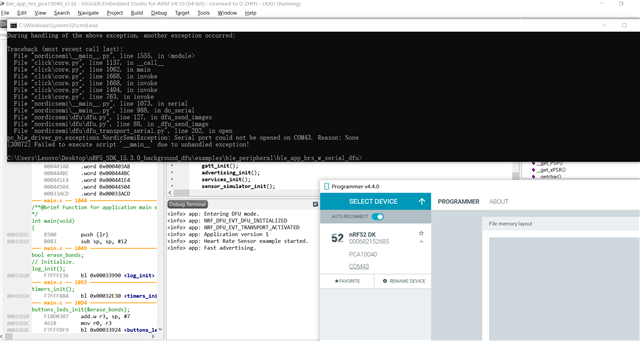I'm just a bit fuzzy on how all of the bootloader stuff comes together.
- Our application is small (100K-ish), so a dual-bank strategy seems appropriate.
- It uses a proprietary bus protocol that we'd rather not pack into the bootloader.
- We need to upgrade potentially hundreds of devices unsupervised, so BLE DFU is not practical.
- We also have a "revert to factory image" button; the bootloader must copy this image from an external SPI ROM IC.
- Our next release will use Bluetooth (but not for upgrade), so we are using the S132 SmartDevice.
I imagine the best solution goes like this:
- Server sends upgrade image to the application during normal use
- Upgrade image is written to the second bank
- Device resets, maybe sending a flag to the bootloader
- Bootloader recognizes the upgrade image, validates the image and the signature and copies the image to the application bank
- Bootloader resets back to the application
I just don't really know what API is appropriate for the above (aside from step 1).
When I bring in even just nrf_bootloader_app_start, it seems to also depend on an overwhelming number of BLE services, so I'm not sure if I'm on the right track with that... I thought DFU doesn't necessarily require BLE?
I've also seen the experimental IoT background update API, but it seems to be exclusive to TFTP... or ANT (it's unclear - or is it both?)
I'm using VisualGDB and have configured the appropriate write to UICR.BOOTLOADERADDR and located the bootloader at 0x00078000. The bootloader seems to start fine.
Any advice for getting started with this?


